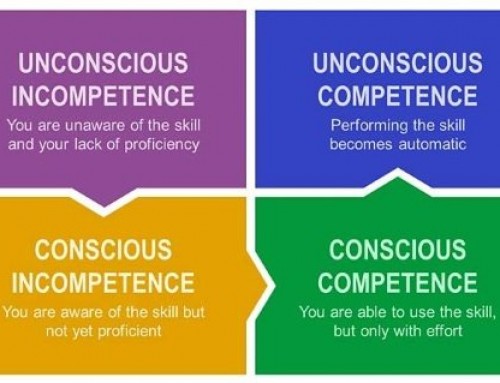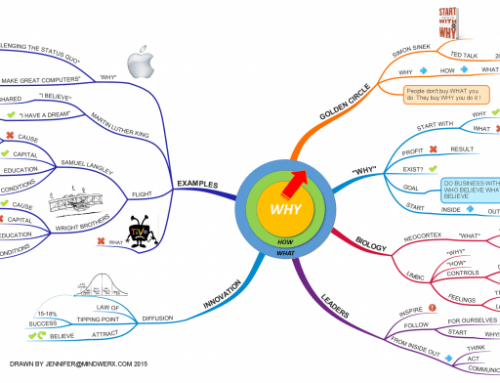
In the mid-1980s many organisations in Australia embraced the concept of Total Quality Management (TQM), and while some struggled with it, others made significant inroads to improving product and service quality. Behind this ‘movement’ were a number of Critical Thinking explorers including notably W Edwards Deming, Phil Crosby, Kaoru Ishikawa, and for me personally Bill Conway. Conway was for many years CEO of Nashua Corporation and was instrumental in bringing attention to the work Dr Deming was doing in Japan to businesses in the USA and later worldwide.
Not long after starting my study of TQM in 1985 I was fortunate to meet both Bill Conway and Dr Deming, and became a champion of the Philosophy of Continuous Improvement so expertly articulated by Dr Deming, and the highly practical approach to collaborative project team based Process Improvement Bill eloquently laid out for us to follow. And while today my focus is more in the areas of Creativity and Innovation, I am constantly reminded that the Critical Thinking approaches I promote is embodied in the principles Dr Deming, Bill and others taught me.
The Critical Thinking Community defines Critical Thinking as that mode of thinking – about any subject, content, or problem – in which the thinker improves the quality of his or her thinking by skilfully taking charge of the structures inherent in thinking and imposing intellectual standards upon them.
As I consider this I wanted to remind myself and possibly introduce to others the philosophy Dr Deming shared with the world in his famous Fourteen Points. Much has been written on these over the years, and I encourage you to explore these and how different industries, organisations and leaders have adopted or adapted these. But the essence of all the approaches that work in a sustainable way owe their success to the work done by Dr Deming. And as the approach presented by Dr Deming applies to any size and type of organisation, here again are his Fourteen Points for your consideration.
- Create a constant purpose toward improvement.
- Plan for quality in the long term.
- Resist reacting with short-term solutions.
- Don’t just do the same things better – find better things to do.
- Predict and prepare for future challenges, and always have the goal of getting better.
- Adopt the new philosophy.
- Embrace quality throughout the organization.
- Put your customers’ needs first, rather than react to competitive pressure – and design products and services to meet those needs.
- Be prepared for a major change in the way business is done. It’s about leading, not simply managing.
- Create your quality vision, and implement it.
- Cease dependence on inspection to achieve quality.
- Inspections are costly and unreliable – and they don’t improve quality, they merely find a lack of quality.
- Build quality into the process from start to finish.
- Don’t just find what you did wrong – eliminate the “wrongs” altogether.
- Use statistical control methods – not physical inspections alone – to prove that the process is working.
- Cease dependence on a single supplier for any one item.
- Quality relies on consistency – the less variation you have in the input, the less variation you’ll have in the output.
- Look at suppliers as your partners in quality. Encourage them to spend time improving their own quality – they shouldn’t compete for your business based on price alone.
- Analyse the total cost to you, not just the initial cost of the product.
- Use quality statistics to ensure that suppliers meet your quality standards.
- Improve constantly and forever.
- Continuously improve your systems and processes. Deming promoted the Plan-Do-Check-Act (Shewhart Cycle) approach to process analysis and improvement.
- Emphasize training and education so everyone can do their jobs better.
- Use Continuous Improvement as a model to reduce waste and to improve productivity, effectiveness, and safety.
- Institute training on the job.
- Train for consistency to help reduce variation.
- Build a foundation of common knowledge.
- Allow workers to understand their roles in the “big picture.”
- Encourage staff to learn from one another, and provide a culture and environment for effective teamwork.
- Institute leadership.
- Expect your supervisors and managers to understand their workers and the processes they use.
- Don’t simply supervise – provide support and resources so that each staff member can do his or her best. Be a coach instead of a policeman.
- Figure out what each person actually needs to do his or her best.
- Emphasize the importance of participative management and transformational leadership.
- Find ways to reach full potential, and don’t just focus on meeting targets and quotas.
- Drive out fear.
- Allow people to perform at their best by ensuring that they’re not afraid to express ideas or concerns.
- Let everyone know that the goal is to achieve high quality by doing more things right – and that you’re not interested in blaming people when mistakes happen.
- Make workers feel valued, and encourage them to look for better ways to do things.
- Ensure that your leaders are approachable and that they work with teams to act in the company’s best interests.
- Use open and honest communication to remove fear from the organization.
- Break down barriers between departments.
- Build the “internal customer” concept – recognize that each department or function serves other departments that use their output.
- Build a shared vision.
- Use cross-functional teamwork to build understanding and reduce adversarial relationships.
- Focus on collaboration and consensus instead of compromise.
- Eliminate unclear slogans, exhortation and targets.
- Let people know exactly what you want – don’t make them guess. “Excellence in service” is short and memorable, but what does it mean? How is it achieved? The message is clearer in a slogan like “You can do better if you try.”
- Don’t let words and nice-sounding phrases replace effective leadership. Outline your expectations, and then praise people face-to-face for doing good work.
- Eliminate management by quotas and objectives.
- Look at how the process is carried out, not just numerical targets. Deming said that production targets encourage high output and low quality.
- Provide support and resources so that production levels and quality are high and achievable.
- Measure the process rather than the people behind the process.
- Remove barriers to pride of workmanship.
- Allow everyone to take pride in their work without being rated or compared.
- Treat workers the same, and don’t make them compete with other workers for monetary or other rewards. Over time, the quality system will naturally raise the level of everyone’s work to an equally high level.
- Instigate a rigorous program of education and self-improvement.
- Improve the current skills of workers.
- Encourage people to learn new skills to prepare for future changes and challenges.
- Build skills to make your workforce more adaptable to change, and better able to find and achieve improvements.
- Make “transformation” everyone’s job.
- Improve your overall organisation by having each person take a step toward quality.
- Analyse each small step, and understand how it fits into the larger picture.
- Use effective change management principles to introduce the new philosophy and ideas in Deming’s 14 points.
Links
Wikipedia has a an excellent overview of Dr Deming and his work.
The W Edwards Deming Institute is also a great place to learn about the Deming System of Profound Knowledge.






Leave A Comment
You must be logged in to post a comment.